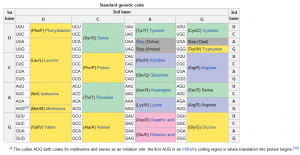As you probably have seen in malls or in online ads, there have been a recent surge in products known as “energy bracelets”. Examples you may have heard include “negative ion” bracelets or “hologram bracelets”.
You have probably also heard that these bracelets can improve balance, treat disease, and perhaps even save the world. Skeptical, you might ask the salesperson why or how these bracelets would help you. They would then give you a whole lot of scientific jargon and explain why each piece of false evidence is true.
 A video from Infinity Pro advertising their bracelets. Notice the extreme amounts of scientific jargon that mean absolutely nothing?
A video from Infinity Pro advertising their bracelets. Notice the extreme amounts of scientific jargon that mean absolutely nothing?
If you were to look at a typical bracelet website, such as Energy Force, you would find that they make numerous claims such as
“ENERGY FORCE…regulates your body’s frequency to an ideal level. Optimal health and peak performance occur when your body maintains ionic balance (the exchange between negative and positive charges) and free flowing energy pathways (harmony) at the optimum frequency.”
How does this bracelet maintain balance? Why does ionic balance matter for health? How does it help you stay healthy? Why is it good to have the “optimal frequency”?
In reality, you wouldn’t find any answers to these questions, because these claims are not scientifically proven.
However, there are some much more devious scams that try to trick you in much less obvious ways. They do this by manipulating scientific data in order to make it fit their claims.
Some examples of the claims made by EQbandz
1. “Anti-oxidising: US Dept. of Agriculture found that anions led to 52% less dust in the air and 95% less bacteria“
2. “Emotional: 25 people tested with seasonal affective depression (SAD) found that anion treatment proved to be as effective against SAD as antidepressants without the side effects of these drugs”
3. “Immune system: Norwich Union Insurance Group: Reduced incidence of sickness and headaches by 78% when exposed to 1000 anions per C/C.”
4. “Aging: Dr Nagao Katsharu, Japan found that skin cells were replaced at 2.5 times normal speed with anions by accelerating the delivery of oxygen to the cells and tissues.”
These claims sound like the band is 100% scientifically proven to work! However, if one was to track these down, they would find that these claims reference studies that were done using gigantic air-ionizer fans, which are much more powerful than a small bracelet. Interestingly a simple Google search reveals that the “doctor” in claim 4 does not seem to even exist. There are much more problems with these claims, and they can be found here.
katatrepsis has this to say:
[The companies are basically saying] “look at all this good stuff air ionisers do, here’s a bracelet that does the same thing” [which] is like saying “look how great scuba equipment is for breathing underwater, here’s a paper bag filled with air”
The conclusions that can be made from research have to be very carefully constructed. By taking legitimate research and formed their own unscientific conclusions, these companies can maliciously miscommunicate the studies to trick potential consumers.
As students in a science communication class, we have a duty to be able to identify these miscommunications and set them straight for the public, as katatrepsis does.
– Tony Hui
References:
http://trueler.com/2011/10/19/holographic-energy-bands-bracelet-watches-scam/
http://www.lifestrength.com/the-vitamin-you-wear
http://katatrepsis.wordpress.com/2011/08/28/negative-ions-and-health-a-review/
http://www.ratbags.com/rsoles/comment/powerbalance.htm
http://www.health24.com/fitness/General/16-4634,60576.asp








